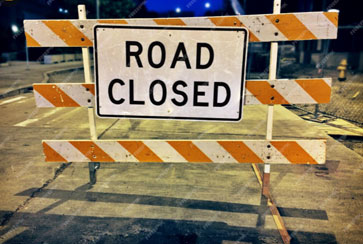Introduction
We’ve all been there—driving along a familiar route when suddenly, a bright orange sign reads “Detour Ahead” or “Road Closed”. Whether due to construction, accidents, or weather conditions, road closures can disrupt your plans and test your patience. But with the right knowledge and preparation, you can navigate detours safely and efficiently. Here’s how.
1. Stay Updated Before You Go
Before heading out on any journey, especially a long one, check for live traffic updates using:
- Google Maps or Waze
- Local transportation websites or apps
- Radio traffic stations or news updates
Staying informed helps you plan ahead and avoid unnecessary delays or surprises.

2. Pay Close Attention to Signage
When approaching a detour:
- Obey all posted signs and signals.
- Look for detour arrows and temporary road markers.
- Avoid taking shortcuts or making unauthorized turns, even if they seem faster—they may be unsafe or illegal.
Traffic authorities design detours to ensure safety for both drivers and road workers. Trust the system.
3. Use GPS Navigation Wisely
Modern GPS apps usually update in real-time, suggesting alternate routes automatically. However:
- Confirm that your GPS app is set to accept real-time traffic updates.
- Be cautious in rural areas or locations with poor signal—download offline maps if needed.
- Don’t blindly follow GPS into construction zones or restricted areas. Use your judgment.
4. Drive Defensively and Be Alert
Road closures can funnel large amounts of traffic into smaller streets, leading to congestion. Stay calm and:
- Keep a safe distance between vehicles.
- Watch for sudden stops, pedestrians, and unexpected lane changes.
- Follow speed limits, especially in work zones where fines may be doubled.
5. Allow Extra Travel Time
Detours often lead to longer routes and slower speeds. When planning your trip:
- Add 15–30 extra minutes as a buffer.
- Inform others if you’re running late due to road conditions.
- Use the delay as a chance to stay calm, listen to music, or enjoy a podcast.
6. Respect Road Workers and Temporary Infrastructure
Construction zones are dangerous places for workers. Always:
- Yield to flaggers and follow their instructions.
- Avoid distractions like phone use or loud music.
- Don’t move barricades or cones—these are there for safety.
7. Know Your Local Detour Routes
If you live in an area where road closures are common:
- Familiarize yourself with alternate routes.
- Understand major cross streets and neighborhood connectors.
- Consider using public transportation if driving becomes too inconvenient.
Conclusion
Detours and road closures are part of keeping our infrastructure safe and up to date. While they may feel like an inconvenience, following safety tips and staying informed can make your journey smoother and stress-free. Remember, patience and preparation are your best tools behind the wheel.
